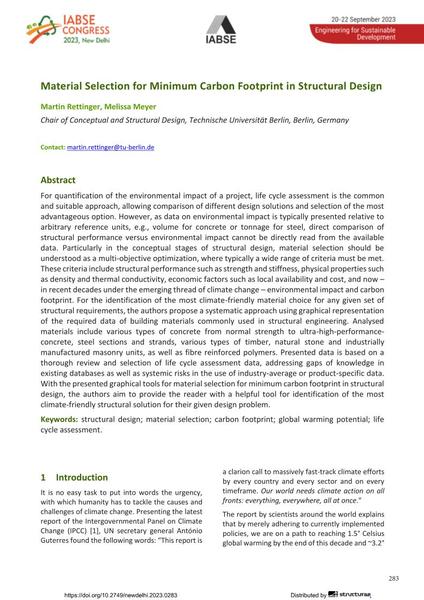|
Abstrakt:
|
For quantification of the environmental impact of a project, life cycle assessment is the common and suitable approach, allowing comparison of different design solutions and selection of the most advantageous option. However, as data on environmental impact is typically presented relative to arbitrary reference units, e.g., volume for concrete or tonnage for steel, direct comparison of structural performance versus environmental impact cannot be directly read from the available data. Particularly in the conceptual stages of structural design, material selection should be understood as a multi-objective optimization, where typically a wide range of criteria must be met. These criteria include structural performance such as strength and stiffness, physical properties such as density and thermal conductivity, economic factors such as local availability and cost, and now – in recent decades under the emerging thread of climate change – environmental impact and carbon footprint. For the identification of the most climate-friendly material choice for any given set of structural requirements, the authors propose a systematic approach using graphical representation of the required data of building materials commonly used in structural engineering. Analysed materials include various types of concrete from normal strength to ultra-high-performance- concrete, steel sections and strands, various types of timber, natural stone and industrially manufactured masonry units, as well as fibre reinforced polymers. Presented data is based on a thorough review and selection of life cycle assessment data, addressing gaps of knowledge in existing databases as well as systemic risks in the use of industry-average or product-specific data. With the presented graphical tools for material selection for minimum carbon footprint in structural design, the authors aim to provide the reader with a helpful tool for identification of the most climate-friendly structural solution for their given design problem.
|

